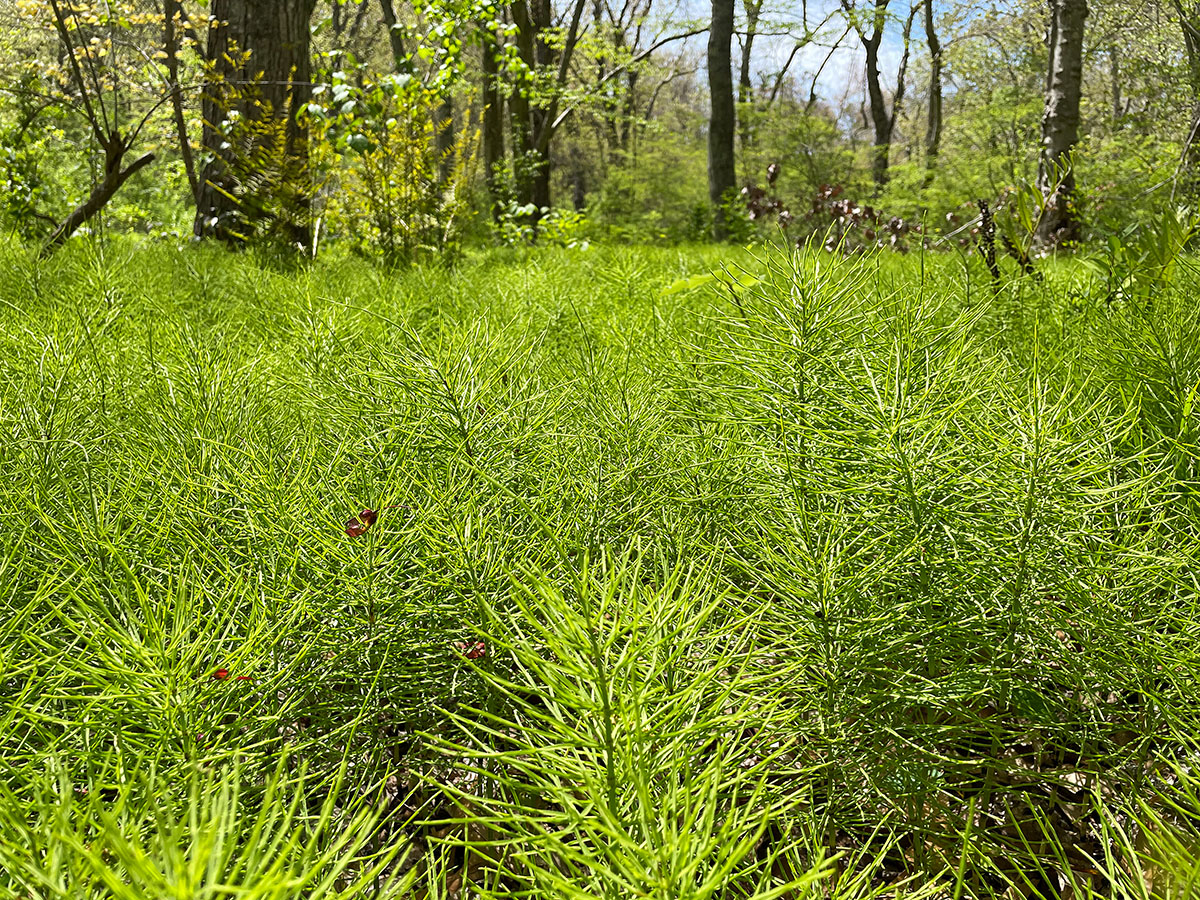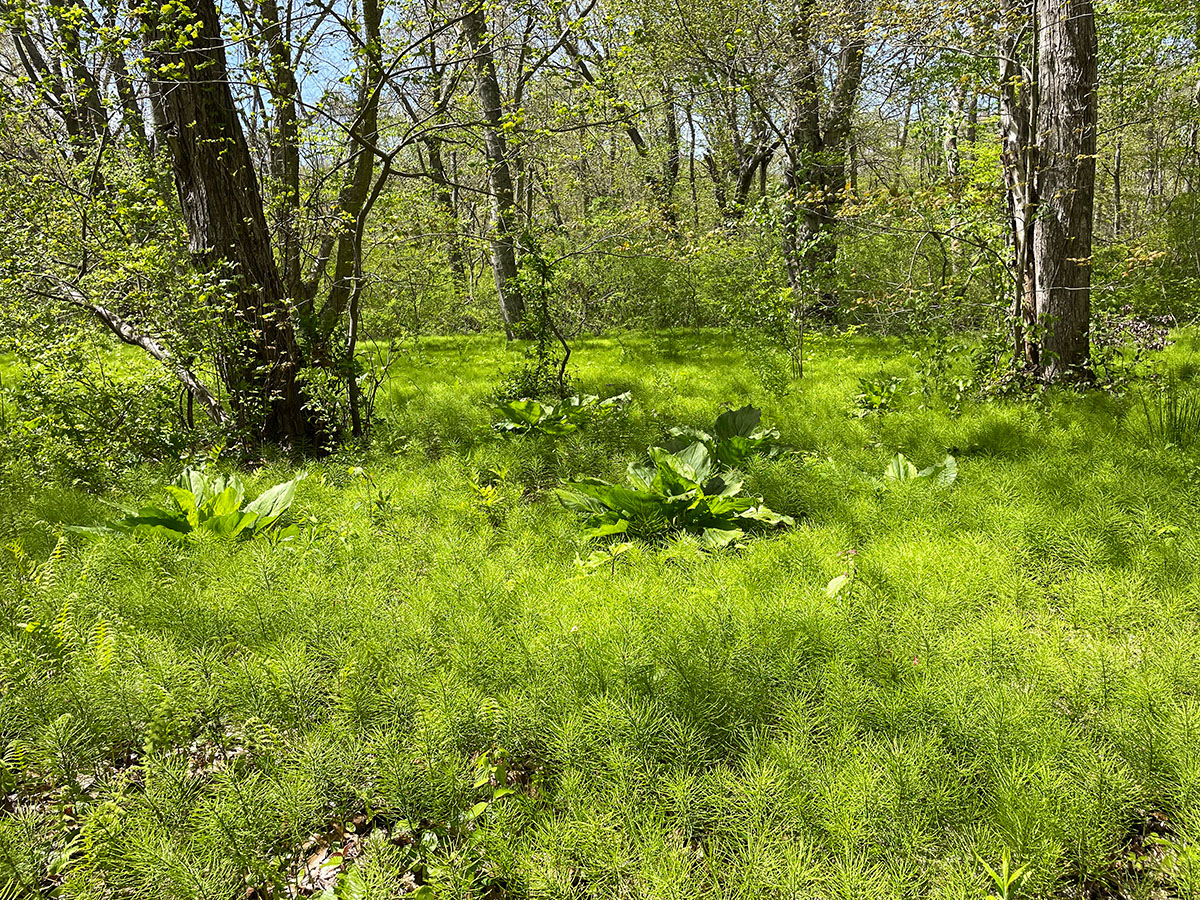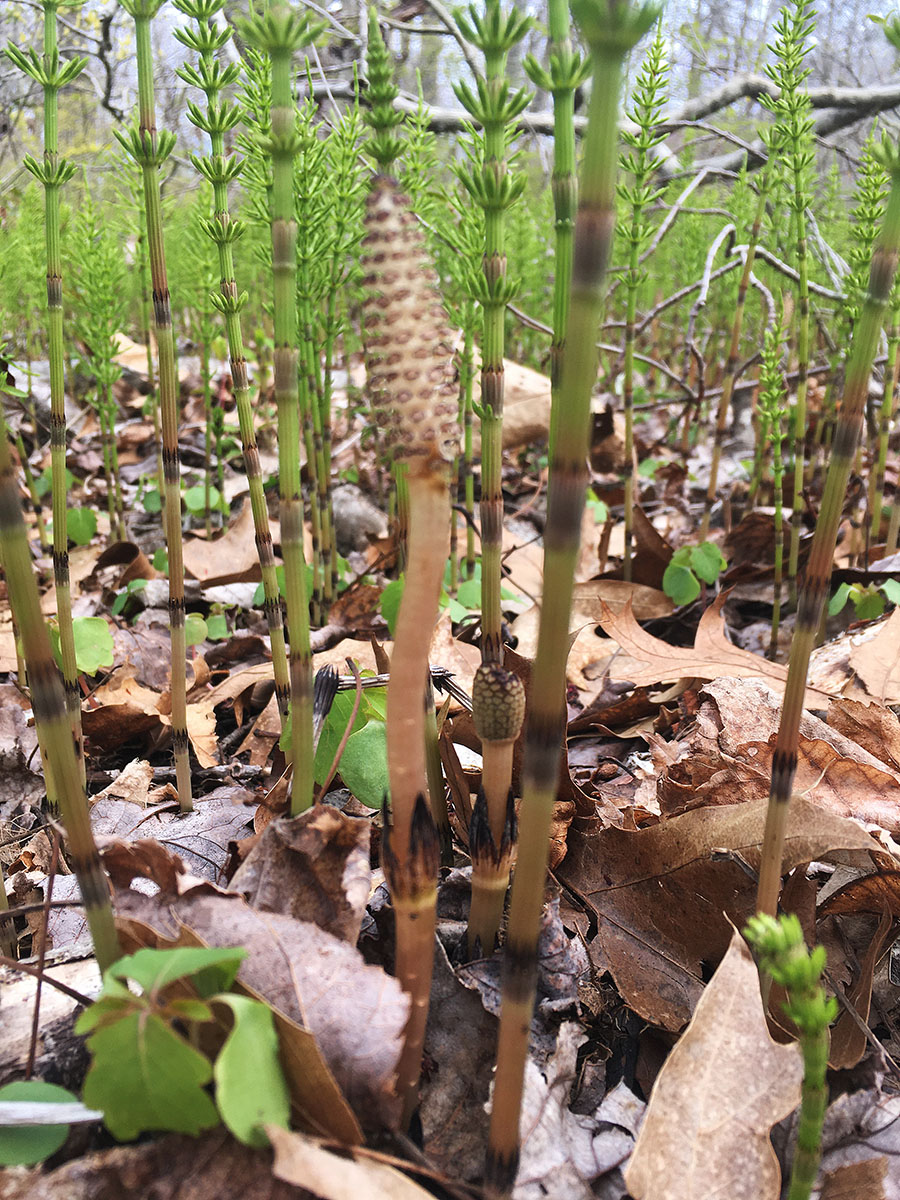Horsetails (Equisetum sp.)
Species in the genus Equisetum are living members of a group of plants, the sphenophytes, that dominated the landscape during the age of dinosaurs. Some grew up to 100 feet tall but today’s plants of the Equisetum family are much smaller, even though some species in South America may reach 15 feet in height.
~ Quote from New York Natural Heritage Program

Horsetails along the Clay Pit Trail in May 2022. Photo by Jack Schneider
An herbaceous perennial relative of ferns, common horsetail consists of two types of stems; sterile, non- reproductive and photosynthetic, and reproductive and non- photosynthetic. The latter, 10 to 25 centimeters long with brown scale leaves and a 10 to 40 millimeters long spore cone, emerge in spring then wither and give way to the sterile, photosynthetic stems. These persist from summer until the first frost. It spreads from rhizomes which can grow as deep as six feet.
Being a relative of ferns, common horsetail does not reproduce via pollen but via spores which are borne on the plant’s reproductive stems. Because of its rhizomatous growth habit and the depth which its roots can reach, common horsetail can be difficult to eliminate from sites where it is unwanted. This has also created concerns about its potential for invasiveness.
~ Quote from U.S. Forest Service
Horsetail meadow in May 2022. Photo by Jack Schneider



